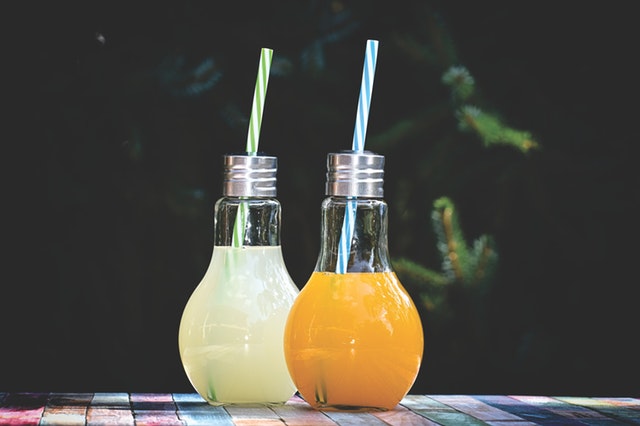
(Source: Pexels)
Drinking the proper amount of water on a day-to-day basis is one of the best ways to stay healthy. One commonly asked question among those looking to stay hydrated is: How do I make water taste better? Whether it be the lack of flavor or a bad aftertaste, there are a few ways to improve the overall taste of your drinking water. With a few easy tips and tricks, staying hydrated will be a piece of cake.
Infuse Your Water with Fruit
One of the most common ways people improve the taste of drinking water is by adding fruit to the water. There are no limits when it comes to the type of fruit chosen to flavor your water, any fruit will work. One of the most popular choices for infusing drinking water is various types of berries. Berries are a nice fruit choice in that they brighten the flavor of your water while also adding a burst of color to what may otherwise be a boring drink. Most fruits should be sliced open before being added to your drinking water. Want to have a little more fun with it? Mash your fruit with a potato masher for large containers or straw or spoon for glasses or water bottles.

(Source: Pexels)
One great way to work fruit infused water into your daily routine is to add a pitcher full to your fridge. This way, whenever you need a drink, instead of getting a glass of bad tasting water, you have a refreshing fruit-infused drink waiting for you. In addition, the longer the fruit is left to Infuse in the water, the stronger the fruit flavor will be.
Add a Hint of Juice or Tea
Another great way to add a dash of flavor to your drinking water is by adding a tiny splash of juice or tea. The easiest way to flavor water by adding juice is to add a 100% pure juice concentrate. This way your water takes on as much of the juice’s flavor without using too much of the juice itself. Juices such as cranberry and lemon are common choices when it comes to flavoring water, both because of their taste and health benefits. Cranberry juice is great for urinary tract health, and lemon juice acts as an aid to hydration and is an excellent source of Vitamin C.
Flavoring your drinking water with tea is another great option. The best way to do this is by steeping your tea and letting it cool overnight. This way, the temperature of the water is unaffected by the tea. The next morning, add a splash of tea to your drinking water for a refreshing, healthy drink. Or better yet, add a cup of tea to an entire pitcher of water in your refrigerator so you have a drink ready at any time!
Cool it Down with Flavored Ice Cubes
A less thought of solution when it comes to flavoring your water is to add flavored ice cubes to your drink. If you enjoy using tea to help flavor your water, consider freezing your steeped tea overnight before adding the ice cubes to your drinking water. As time goes on and the cubes melt, they will release their flavor into your drinking water. You can flavor your water with other frozen liquids as well, such as coffee or flavored sparkling water.
Fruit puree is another great option for making flavored ice cubes. Simply blend up your favorite types of fruit, with a tiny bit of water if needed, and pour the resulting puree into ice cube trays. Seasonal fruits are a great option for puree ice cubes, like strawberries in the summer and pear puree in the winter.
Load It Up with Herbs

(Source: Pexels)
Adding a variety of herbs to your water can help improve the flavor of the water as well. Herbs can easily be grown in an indoor setting or an outdoor garden, making it easy to spice up your water. Options like mint and basil are great for flavoring water. The best method for flavoring water with herbs is to let the herbs infuse in the water overnight so they have time to release their flavor into the water. Another benefit of herbs for infusing water is that they are often subtle in flavor, which is perfect for those of us who don’t care for a whole lot of flavor bursting on our taste buds.
Veggie Infused Water? Yes, It’s True!
If you do a lot of cooking, you know vegetables are commonly prepared in boiling water. It’s a great idea to keep the excess boiled water to add to your glass of drinking water. Carrots and other veggies are great for helping give your water a subtle taste, without being too sweet. In addition, veggie water is great for adding vitamins and nutrients to your diet (or sneaking them into your child’s diet).
Filter Your Tap Water
One of the best ways to make your water taste its best without needing to add anything to the water itself is to filter your tap water. People often consume water from their tap without using a filter, and the resulting taste is less than desirable. This is due to the presence of various minerals and other contaminants present within the water. While not necessarily dangerous or bad for you, these contaminants can greatly affect the taste of your water, commonly resulting in a stale or otherwise undesirable aftertaste.

(Source: Pexels)
Filters are commonly installed underneath sinks where they work only on the sink they are connected to. However, occasionally house-wide filter systems are necessary. The type of filter system required for an individual depends on a number of criteria, such as a number of sinks and what the water from those sinks is being used for. There are a number of different types of filters commercially available, with a few being most common.
Reverse Osmosis Filters
Reverse osmosis filters force water through pores within a membrane. These pores are able to allow water through the filter while keeping virtually all contaminants out of the end product.
Carbon Filters
Carbon filters, which trap contaminants in small pores within the carbon itself, are commonly noted in pitcher filters. These filters are inexpensive and effective, though unable to remove inorganic compounds and salts.
Ultrafiltration Filters
Ultrafiltration works by forcing water through a membrane of fibers, filtering out contaminants larger than 0.02 micron in size. Contaminants removed by ultrafiltration include algae, bacteria, chlorine, lead, mercury, pesticides, sediments, and viruses.
All in All
Whether you are in search of a quick and easy way to improve your water’s taste, or a long-term solution to bad tasting water, making sure your drinking water is great tasting and desirable is important. Drinking the proper amount of water is an important habit to create, and making that task easier is a great priority to have. Flavoring water, installing a filter, and keeping tasty drinks on hand are all great ways to ensure your water is top-notch.
About The Author:
Mark Ligon is the Marketing Manager at HouseWaterFilters, a provider of whole house water filtration systems and supplies. His favorite part of the job is sharing information and advice on healthy drinking water habits. When he’s not thinking about water filters, he’s spending time with his family and friends and completing DIY projects around the home.




